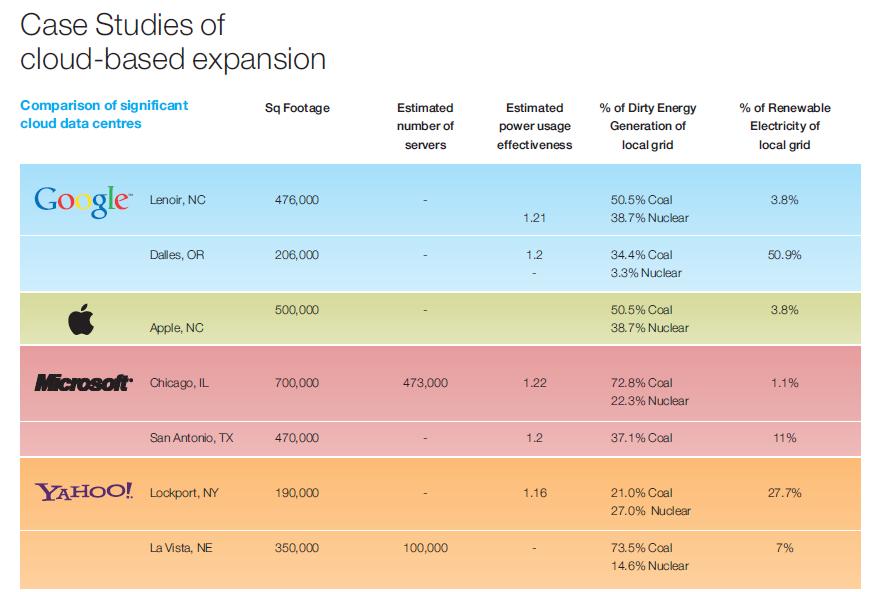Greenpeace calls on the cloud to reduce emissions

Cloud computing has become a way of life for much of the working world and demand for it will quadruple by 2020. That will make for a mighty thirsty cloud when it comes to electricity, according to a report out yesterday from Greenpeace International.
Greenpeace's report - "Making IT Green - and its Contribution to Climate Change" - projects the growth in cloud will more than triple its electricity consumption between now and 2020 to 1,963 billion kilowatt hours. That's electricity consumed by data centers and the attendant telecomm infrastructure that make up the cloud.

"Unless cloud data centres are strategically placed to utilise or be
co-developed with renewable sources of electricity, the data centre
operators are stuck with the same problem everybody has, and having
to accept the mix of clean and dirty energy sources that the electric
utilities rely upon to feed the grid," the reports says.
Greenpeace is urging major cloud providers - namely Microsoft, Yahoo!, Google and Apple - to use their power and influence to make sure carbon reduction legislation is enacted. It also praises them for locating data centers where electricity sources are cleaner and consumption is lower. For example, Yahoo! is building a $150 million data center in Buffalo, N.Y. where it has access to hydro in a cold climate conducive to fresh-air cooling.
But from the chart shown above, the major source of energy to power data centers remains coal (click on it to make it larger).
Greenpeace is pushing areas of legislation for its so-called "CoolIT" initiatives: industrialized nations commit to reducing CO2 emissions by 40 per cent below 1990 levels by 2020. Secondly, it wants cloud vendors to promote legislation for emission permits that could generate "at least" an estimated $140 billion that could be put toward clean energy.
Greenpeace officials know that beyond the cloud, the IT industry is key to reducing carbon emissions (see how IBM below explains green data centers through its "Green Data Center Man" in the video below). Without IT, there would be no smart grid or video conferencing to cut down in jet travel. Without semiconductors, hybrids and slew of forthcoming electric vehicles would be not be possible (without semiconductors, accelerators might not get stuck, either).
And IT company CEOs on down are generally sympathetic to the cause of reducing man-made climate change and their carbon footprints. Greenpeace's CoolIT web site rates CEOs on their efforts to reduce reduce emissions on scale of 100, but the best scored earned was a 43 by IBM CEO Sam Palmisano. When I was in school, 43 was a flunking grade.
But after all, these are businesses whose survival and growth depends on profits. Greenpeace wouldn't have much luck appealing to profit-less auto makers which have generally been less sympathetic to the environment just by dint of the products they make.
So in the private sector, cloud vendors are green go-to guys.
Follow me on Twitter.
This post was originally published on Smartplanet.com